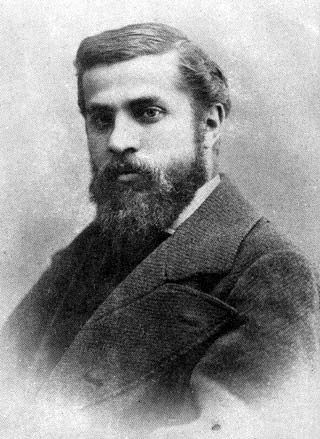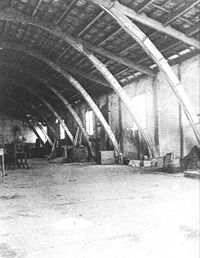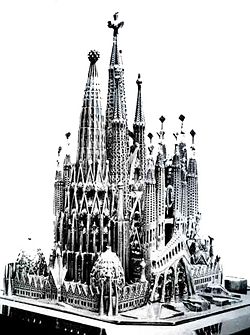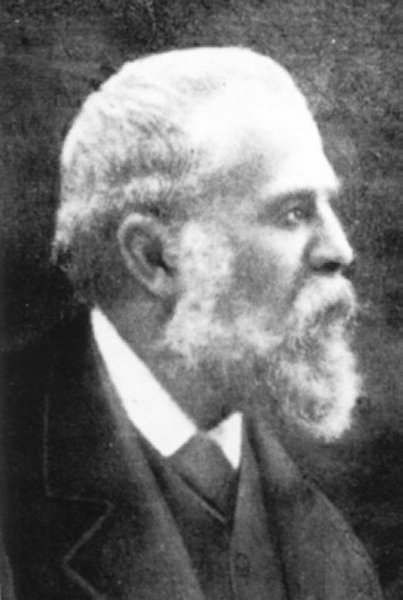Gaudí's biography
Riudoms or Reus, Baix Camp, 25 June 1852 - Barcelona, 10 June 1926
Son of a family of caldereros -motion family always claimed that as the source of his personal vision and understanding of space, he went to Barcelona in 1870 to study architecture, which he did while working in different studies of architects and masters of works. You can divide their production for the most part built-in Barcelona in four stages.

The first starts 1878 -year that was titled, until 1882 and is marked by the architect of communion with the ideals cooperative: all works of those years were urban and social collaborated with Josep Fontserè in the park of the Citadel , Designed lampposts, as the two of the Royal Plaza, and a flower kiosk and with urinary and built the factory and two residential buildings around a planned neighborhood, La Cooperativa Obrera Mataronense. The first runs from 1878-year that was titled, until 1882 and is marked by the architect of Communion with the ideal cooperative: all works of those years were urban and social collaboration with Josep Fontserè in the park of the Citadel, Designed lampposts, as the two of the Royal Plaza, and a flower kiosk and with urinary and built the factory and two residential buildings around a planned neighborhood, La Cooperativa Obrera Mataronense.
The central stage since 1883, when he came to work in the temple of the Sagrada Familia-up to 1900, and is marked by an effort to overcome the historical styles and get a visual and structural forms, the two basic aspects of what which can be defined as gaudinian style, are the years of intense activity that met Eusebi Guell i Bacigalupi who built and can Vicens (1883-85), the Capricho de Comillas (1883-85), flags Güell (1884-87), The Palau Güell (1886-91), the episcopal palace of Astorga (1887-94), the fellowship of the college (1888-90), the House of Botines in Leon (1891-94), can Calvet (1898 -- 1904) and Bellesguard. The central stage since 1883, when he came to work in the temper of the Sagrada Familia-up to 1900, and is marked by an effort to overcome the historical styles and get a visual and structural forms, the two basic aspects of what which can be defined as Gaudínia style, are the years of intense activity that met Eusebi Guell i Bacigalupi who built and can Vicens (1883-85), the Capricho de Comillas (1883-85), flags Güell (1884-87), The Palau Guell (1886-91), the episcopal palace of Astorga (1887-94), the fellowship of the college (1888-90), the House of Botines in Leon (1891-94), can Calvet (1898 - 1904) and Bellesguard.

This stage is characterized by the use, so free and staff, that makes art a Muslim and the Baroque or Gothic styles, with particular development of all trades and applied arts, the invention of a considerable number of mechanisms, systems and architectural elements, the rigorous physical execution of projects and the completion of the interiors. From 1900 to 1917 is its most creative and innovative era, one in which it develops its own style: Park Guell (1900-14), the reform of Can Batlló (1904-06), the church of the colony Guell ( Construction in 1908-15), Canon-La Pedrera-Milà (1906-10) and the schools of the Sagrada Familia. This stage is characterized by the use, so free and staff, that makes art a Muslim and the Baroque or Gothic styles, with particular development of all trades and applied arts, the invention of a considerable number of mechanisms, systems and architectural elements, the rigorous physical execution of projects and the completion of the interior. From 1900 to 1917 is its most creative and innovative era, one in which it develops its own style: Park Guell (1900-14) The reform of Can Batlló (1904-06), the church of the colony Guell (construction in 1908 -- 15), Canon-La Pedrera-Milà (1906-10) and the schools of the Sagrada Familia.

From 1918 until his death accidentally hit by a tram, was closed in the Holy Family looking for a synthesis figurativoestructural that, in the form of a geometric top, developed in the fourth draft of the ships of the temple and practically applied to finished the towers of the facade of the Nativity. Hombre de una profunda e intensa religiosidad, hay que interpretar esta actitud como una forma histórica de su voluntad de perfección absoluta y como una forma de justificación trascendente de su trabajo y su obra, entendidos, respectivamente, como una especie de sacerdocio del 'arquitectura y como una sacralización de su producto. A man of deep and intense religiosity, we should interpret this as a landmark of his willingness to absolute perfection and as a form of transcendental justification of his work and his work, understood, respectively, as a kind of priesthood of the architecture and as a pilgrimage of their product.
Next to his religiosity, expressed a deep civility and a great love for his people and his land, which shows his incarceration are going to hold a Setembre Onze of the effort to speak Catalan in many of the visitors and luster of the Sagrada Familia, among them Alfonso XIII, or the conscience of building the cathedral in Catalonia, which said in Prat de la Riba when he had proposed to submit to a deputy. Figure capital within the compound of the modernist movement, has undoubtedly been the greatest architect who has never had Catalonia and one of the leading figures of the nineteenth century art world.

His historic mission was, in general terms to end the historical architecture and eclectic-thinking architecture and make that lasted from the Renaissance, without, however, could be reached, parallel time, the development of architecture s of the century, will no longer be posed in terms of style, but new content, new forms of life and social organization, and this was a new world that he could not understand, it was no longer hers.
The great significance of his task, but was increased by the fact that took place virtually alone, disconnected from the avant-garde art, which, moreover, virtually ignored until the second postwar Europe (Gaudinist) In 2002 -2003 was Gaudi held the year. The great significance of his task, but was increased by the fact that took place virtually alone, disconnected from the avant-garde art, which, moreover, virtually ignored until the second postwar Europe (Gaudinist) In 2002 -2003 Gaudi was held the year . This year, the Vatican began the study of the proposal for the beatification of the architect. This year, the Vatican began the study of the proposal for the beatification of the architect.
Source: